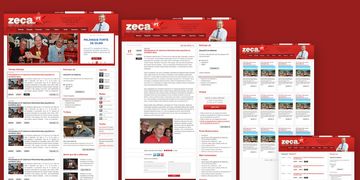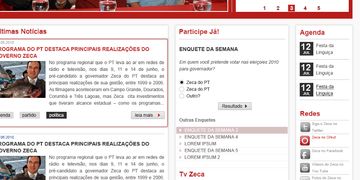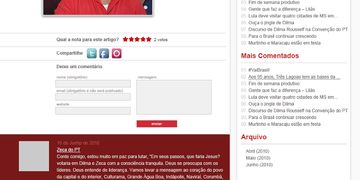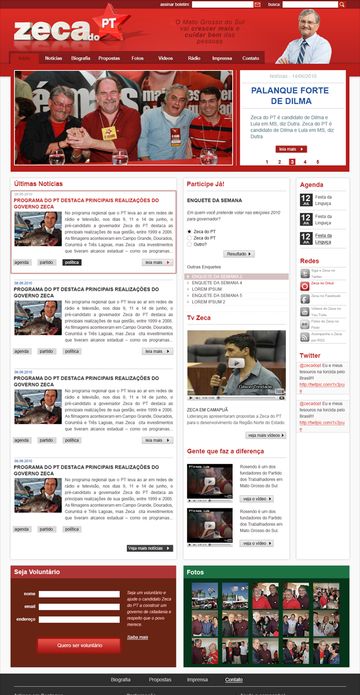My first UX job

The story of my first user experience work
I never imagined that someday I would do some work for politics and until today I am surprised by this project. Despite the low quality, I decided to put it here for two reasons: First was the first time I worked with user-centered design (not knowing for sure who was doing it) and second because with this project, I realized the difference that design can make in people’s lives.
In 2010 I received the demand to rebuild a governor candidate’s website. The political party would like to improve the candidate’s presence on the internet and maintaining the old site was problematic. The old site was poor, made in an amateurish way and was nothing more than a collage of photos of the candidate and calendar of his script. Blog posts were confined to cold announcements of the political campaign and did not really help the user to know the proposal.

But how to solve a marketing problem with only one website? From then on, the entire team began to search the internet (in some crude form of netnography) the opinions of the users of the region, about the website and the candidate.
What we found was a complete lack of communication. We noticed through social networks that people sought communication with the politician to solve everyday problems and were completely ignored. And not by a distant stance of the party or the politician. The main reason was the lack of knowledge of those responsible on how to deal with this situation.
And how could we promote citizenship, reduce this distance and bring candidate and voter closer? After a certain negotiation with the party, we have not only the space to debate campaign themes but also respond weekly to voters’ doubts from the candidate himself. Topics for discussion were chosen weekly and the monologue became a dialogue.
The site design received features like polls, votes and was opened for comments. The most complicated part was the logistics of how to receive these messages, and discuss with the party and the politician the answers, as they were both in different locations.

By giving voice to users, the site’s audience has changed from party members to local people. They began to discuss issues such as basic sanitation and cleaning water and the candidate’s proposal was disseminated.

What was once just a political marketing platform evolved into a space for political debate where people were heard and their issues brought to the candidate.
Unfortunately, by decision of the party at the time, all content was removed at the end of the election. But even today, having become a common practice, I remember this project about how design can empower people and bring citizenship.
My role was ideation, design, prototyping, and occasional content management.
